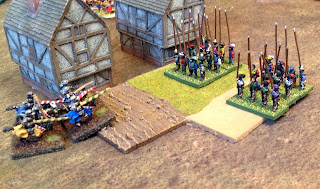My recent visit to Liguria caused me to do a bit of background reading into the history of Genoa, based on Nicolas Walton's book '
Genoa 'La Superba' - The Rise and fall of a Merchant Pirate Superpower'.
Visiting the region with its harsh mountainous geography that hugs the coast, you can easily see why the sea would be the natural outlet. The story of medieval Genoa is none the less a remarkable one. They traded across the known world, supported the crusades and led the fight against the Barbary pirates. Less happily, they also introduced the Black Death to Europe.
I was familiar with the conflict with Venice, but not aware of the 200 year war with their west coast maritime rival, Pisa. While I didn't get up to Genoa, I did visit a number of the formidable castles, built by both sides in this war that Genoa won.
They very nearly conquered Venice in the medieval period, but arguably came out second best in the long term. Despite this failure, it was the Genoese Admiral, Andrea Doria, who led the Christian fleet at Lepanto, and achieved much more besides. The author describes him as 'The Steve Jobs of the Mediterranean', reflecting the city's commercial approach to war and trade. Other luminaries included Christopher Columbus, so there is a certain poetic justice that so many Ligurians emigrated to the USA.
Today, we think of Italy as a nation state like any other. However, it wasn't until the mid 19th century that the often warring states and their big power allies were unified. The brains behind the Risorgimento was the Genoese born Giuseppe Mazzini. Metternich said '
But nothing and no one has created greater difficulties for me than a devil of an Italian'. If Mazzini was the brains, the muscle was fellow Ligurian (although born in Nice), Giuseppe Garibaldi. Together they were the idealistic cutting edge of unification, often several steps ahead of the the pragmatic Piedmont leaders.
The Second World War was not kind to the region. There is model in the naval museum at La Spezia of the naval base in 1945, which clearly shows the damage allied bombing did, and Genoa suffered in similar fashion. After the overthrow of Mussolini, they also had a particularly ruthless SS Commander in Friedrich Engel, known as the Butcher of Genoa. There is therefore a certain irony that many prominent Nazis escaped to South America through Genoa. Even more ironically many Jews escaped to Palestine from La Spezia.
Walton has written a book that is part history, part travelogue. While Venice may be the better known naval superpower of the medieval and early modern period. The fascinating history of Genoa deserves to be better known. This book does just that.
The Pisan castle at Lerici captured by Genoa.

























